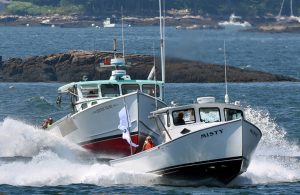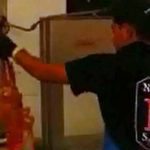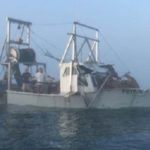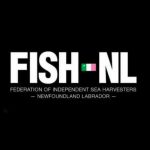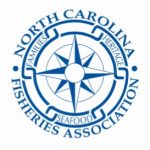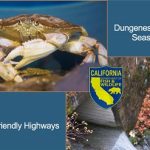Tag Archives: Virginia Institute of Marine Science
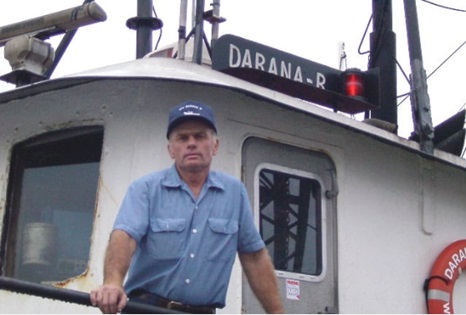
Captain Jimmy Ruhle Honored Posthumously with New Cooperative Research Award
The Mid-Atlantic Fishery Management Council named Captain Jimmy Ruhle as the first recipient and namesake of a new award that recognizes outstanding contributions to cooperative fisheries research in the Mid-Atlantic region. His son, Captain Robert Ruhle, accepted the award on his father’s behalf during the Council’s meeting last week in Arlington, Virginia. Jimmy Ruhle was a lifelong commercial fisherman, a former Council member, and a trailblazer in cooperative fisheries research. He had an instrumental role in the creation and success of the Northeast Area Monitoring and Assessment Program (NEAMAP) Mid-Atlantic/Southern New England trawl survey, a cooperative fishery-independent survey of coastal waters from Cape Hatteras north to Cape Cod. Since 2007, the survey has been conducted biannually aboard Jimmy’s vessel, the F/V Darana R, by a team of Virginia Institute of Marine Science (VIMS) researchers working in partnership with Jimmy and his crew. more, >>click to read<< 13:11
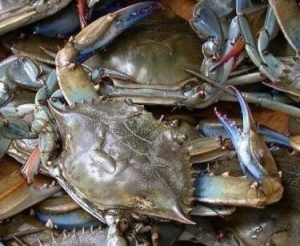
Chesapeake Bay blue crab population improves after all-time low in 2022
This year, the number of spawning age female crabs and adult male crabs both increased substantially, but the number of juvenile crabs only increased by about 15%, according to the winter dredge survey, which is completed from December to March by the Maryland Department of Natural Resources and the Virginia Institute of Marine Science. “We are encouraged by the increases in adult crab abundance, but we need to be vigilant given the ongoing low recruitment numbers,” said Lynn Fegley, acting director for Maryland Department of Natural Resources’s Fishing and Boating Services, in a statement. “We haven’t seen a strong year class since 2019 despite maintaining the spawning stock at a level capable of producing one.” Video, >click to read< 12:56
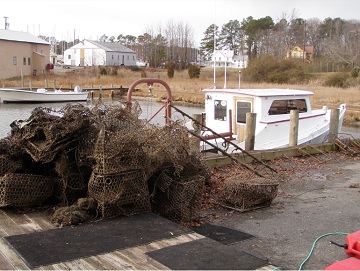
VIMS to lead national program for managing derelict fishing gear
The National Oceanic and Atmospheric Administration has recommended William & Mary’s Virginia Institute of Marine Science as home base for a new national program focused on protecting U.S. coastal waters from derelict fishing gear. The $8 million provided by NOAA to implement the four-year program is the largest single grant award in VIMS’ 83-year history. Many of these dollars will be passed on to program partners through an annual grant competition. Formally known as the Nationwide Fishing TRAP Program — “TRAP” for Trap Removal, Assessment & Prevention — the effort includes funding for commercial and tribal fishers to remove derelict pots from Virginia’s waters. >click to read< 17:46
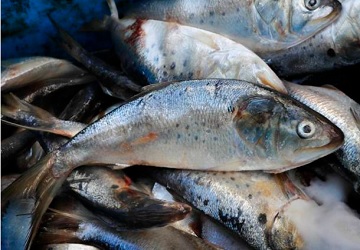
Virginia: General Assembly bill could help end debate of whether menhaden are overfished in the Chesapeake Bay
The state Senate passed a bill Wednesday to fund a study by the Virginia Institute of Marine Science to calculate menhaden populations in the state. The study would survey the number of fish over 18 months and the amount of bycatch, the unintended fish caught in the nets. The menhaden population along the Atlantic coast is considered healthy according to the Atlantic States Marine Fishery Commission, but groups such as the Virginia Saltwater Sport Fishing Association and the Chesapeake Bay Foundation want to know the numbers in the bay. Other fish, including striped bass, dine on menhaden. >click to read< 11:38
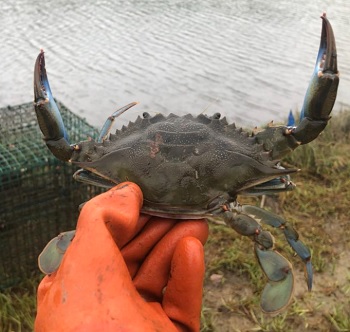
Surprising Blue Crab Population Develops In Maine
Up in the Gulf of Maine, outside the crabs’ historic range, these creatures are a source of surprise. But over the past few years, it has become more and more common for people to find blue crabs. Lobster fishermen and women are catching them in their lobster pots. Divers are seeing them when they search for scallops. Beachgoers are spotting them in tide pools. “We don’t want to make claims yet that this is a permanent population,” Crane said. “If we’re finding blue crabs for five or ten years in the same locations, that starts to be a more compelling argument that this is a permanent population.” >click to read< 15:24
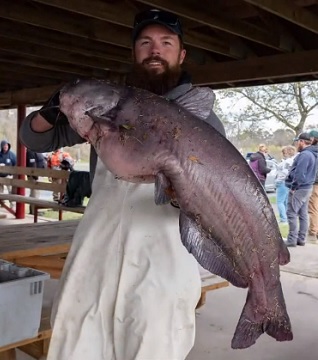
This invasive fish population is exploding as native Blue Crab populations hit record lows.
The invasive species in question is the blue catfish, a species so large it has become known as the “River Monster of the Potomac ” and other major Chesapeake Bay tributaries. The catfish’s diet includes native Blue Crabs. A November 2021 study from the Virginia Institute of Marine Science reports the catfish consumed as many as 2.3 million crabs per year from a study area in the lower James River. The first blue catfish were intentionally imported into the James River in Virginia during the 1980s. The species is native to the Mississippi valley. The fish are huge and consume almost any other species of wildlife they can encounter, catch and swallow, including crabs and other shellfish, Love said. Researchers have found the blue catfish will even eat ducks. >click to read< 07:59
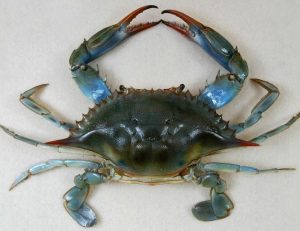
Chesapeake Bay blue crabs in trouble, tighter harvest restrictions loom
With the Chesapeake Bay’s crab population at its lowest ebb in more than 30 years, Maryland and Virginia are moving to curtail harvests in one of the region’s most valuable fisheries. Fisheries regulators in both states have proposed new catch restrictions, with plans to finalize them by the end of June. In Maryland, tighter limits for both commercial and recreational crabbing would take effect in July and for the first time would limit commercial harvests of male crabs, not just females. New commercial restrictions in Virginia would begin in October and continue until the crabbing season ends Nov. 30. >click to read< 08:17
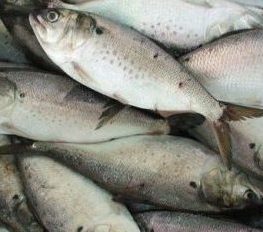
Louisiana HB1033: Legislation Would Have Major Costs, New Report Details Fishery’s Economic Value
Despite attempts at further regulation, the Gulf menhaden fishery is already being sustainably managed. The most recent stock assessment found that the species is not overfished nor is overfishing occurring. Since 2019, the Gulf menhaden fishery has been certified sustainable by the Marine Stewardship Council. “This report demonstrates that these proposals would likely cause real economic harm to not just the menhaden fishery, but to the coastal communities that rely on it,” said Ben Landry, Director of Public Affairs at Ocean Harvesters, which operates a fleet of menhaden fishing vessels. “Severely restricting our fishermen in state waters is both damaging and unnecessary.” The report looked at the direct, indirect, and induced impacts of the fishery, which is one of the largest in the region. >click to read< 13:56
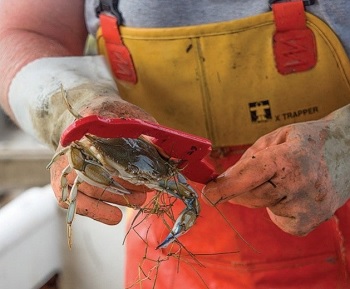
Chesapeake Bay: Targeting male blue crabs for harvest is preventing female crabs from having offspring
The Bay’s crab fishery is currently regulated to limit the harvest of female crabs, in a so-far successful effort to ensure that enough survive to reproduce and maintain the crustacean’s overall abundance — and sustain the estuary’s most valuable fishery. But researchers have wondered — and even worried at times — if harvesting more male crabs (or jimmies, as watermen call them) than females could be having an impact on the population. >click to read< 17:27
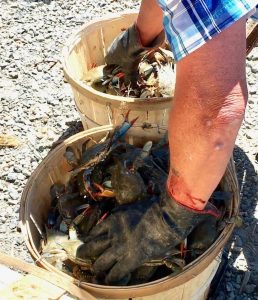
Chesapeake crab count up, but fewer watermen catching them
Stocks of blue crab in the Chesapeake Bay are up from last year by an estimated 60 percent, the best it’s been in six years, according to a group of experts from state and federal agencies and academic institutions. “The winter dredge survey results indicate a strong year ahead for blue crab,”,,, And while that’s good news for watermen, there are fewer of them actually out fishing for crabs in the Chesapeake Bay and its tributaries. >click to read< 18:48
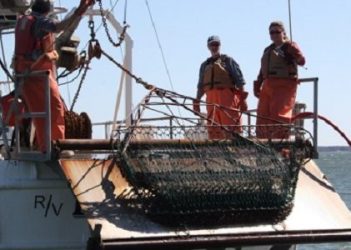
Blue crab stock healthy with above average abundance
Results from the latest Blue Crab Winter Dredge Survey — conducted annually by the Virginia Institute of Marine Science and Maryland Department of Natural Resources — show the Chesapeake Bay’s blue crab stock remains healthy and able to support quality commercial and recreational harvests. The results — available due to months of field sampling and laboratory analysis by VIMS researchers Mike Seebo, Katie Knick, Gabby Saluta, Alison Smith, and colleagues at Maryland DNR — were announced by the Virginia Marine Resources Commission and Maryland DNR leadership. >click to read<21:22
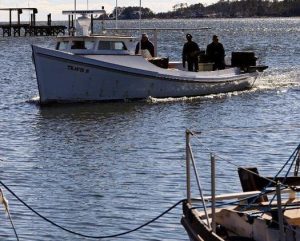
Watermen get say on how to tackle ‘ghost pots’ in the Chesapeake Bay
“Ghost pots” remain a menace in the Chesapeake Bay, but how big a menace and what to do about them is anybody’s guess. That could change now that the 1,056 hard crab fishermen licensed in Virginia are getting a chance to have their say. Researchers at the Virginia Institute of Marine Science are mailing surveys to watermen asking for their ideas on the countless crab pots that, for any number of reasons, end up haunting the bay, trapping and killing crabs and other hapless creatures that crawl or swim inside. >click to read<14:58
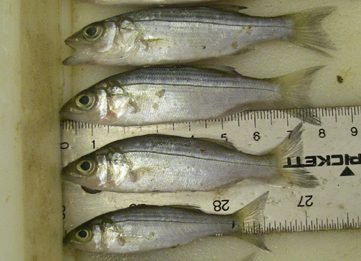
Chesapeake Bay surveys show striped bass doing just fine
Virginia and Maryland say seine surveys conducted over the summer show young-of-year stripers – those spawned this past spring – top historic averages and signal good fishing for commercial and recreational anglers in a few years. Mary Fabrizio, who heads Virginia’s survey, said annual sampling has important economic and ecological value and helps in managing the species. “By estimating the relative number of young-of-year striped bass, our survey provides an important measure of annual and long-term trends in the bay’s striped bass population,” >click to read<15:36
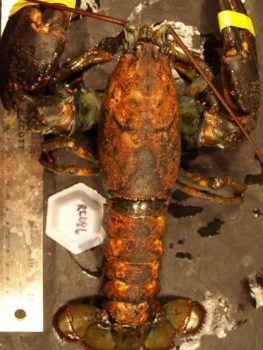
Solution to Lobster Shell Disease Remains Elusive, Blindness is also a growing concern
Despite more than 20 years of declining lobster populations in southern New England and extensive studies of the shell disease that is a major factor in their decline, scientists are still struggling to provide definitive answers to help restore hope to those working in the local lobster fishery. A new study of lobsters along the eastern Connecticut coast has found that the disease is linked to warming water temperatures, while progress is slow in efforts to identify probiotics to counteract the disease and to better understand why so many lobsters are blind. >click to read<11:37
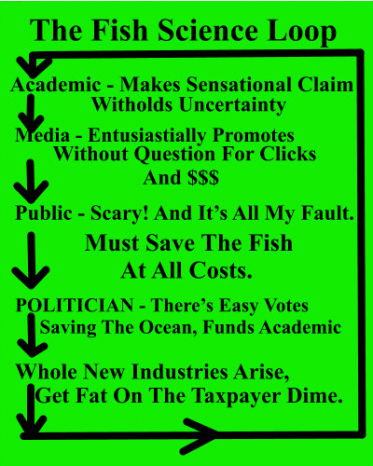
Lost Crab Pots: Not as Bad as We Thought?
Back in 2016, a team of scientists from the Virginia Institute of Marine Science said watermen lost an astounding number—145,000 crab pots, leading to the deaths of millions of dollars’ worth of crabs trapped in those pots. But a different panel of scientists says it’s not as bad as they originally thought. Glenn Davis, who chairs the Chesapeake Bay Stock Assessment Committee, told a winter meeting of fisheries managers that the VIMS numbers are wrong.,,, But once the VIMS study was out there, it was hard to take back. And sure enough, somebody tried to monetize it.>click to read<09:05
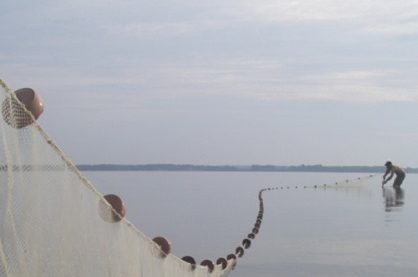
Juvenile striped bass maintain average abundance in Virginia waters in 2017
Preliminary results from an ongoing long-term survey conducted by researchers at the Virginia Institute of Marine Science suggest an average year class of young-of-year striped bass was produced in Virginia tributaries of Chesapeake Bay in 2017. The 2017 year class represents the group of fish hatched this spring that will grow to fishable sizes in 3 to 4 years. The program, formally known as the Juvenile Striped Bass Seine Survey, recorded a mean value of 8.98 fish per seine haul in the Virginia portion of Chesapeake Bay, which is similar to the historic average of 7.77 fish per seine haul. click here to read the story 08:16
In Chesapeake Bay’s changing ecosystem, blue crab is king (and moving north)
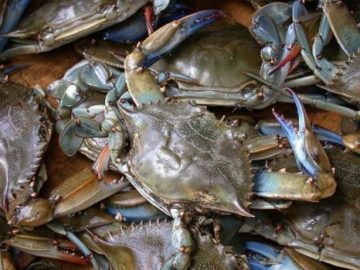 In the face of an evolving ecosystem, experts agree many of the differences in Chesapeake Bay marine life can – at least in part – be attributed to a worldwide warming trend. Over the last three decades, water temperatures in the Chesapeake Bay have increased about 1.5 degrees Celsius, or about 2.7 degrees Fahrenheit, said Rom Lipcius, professor of marine science at the Virginia Institute of Marine Science. The change means populations of many native sea creatures in the Chesapeake have moved or expanded north in search of cooler water temperatures, and other non-native creatures have moved in. As the warming trend continues, experts say some marine species will thrive as others struggle to survive in the face of temperature, environment and predator and prey changes. “It’s not all bad news, and it’s not all good news,” said Jon Hare, science and research director for the National Oceanic and Atmospheric Administration’s Northeast Fisheries Science Center. “There are both winners and losers in this situation.” There have been a number of species, including blue crab, scup and black sea bass, that have shifted or extended northward along the Atlantic coast, said Hare. Read the story here 08:35
In the face of an evolving ecosystem, experts agree many of the differences in Chesapeake Bay marine life can – at least in part – be attributed to a worldwide warming trend. Over the last three decades, water temperatures in the Chesapeake Bay have increased about 1.5 degrees Celsius, or about 2.7 degrees Fahrenheit, said Rom Lipcius, professor of marine science at the Virginia Institute of Marine Science. The change means populations of many native sea creatures in the Chesapeake have moved or expanded north in search of cooler water temperatures, and other non-native creatures have moved in. As the warming trend continues, experts say some marine species will thrive as others struggle to survive in the face of temperature, environment and predator and prey changes. “It’s not all bad news, and it’s not all good news,” said Jon Hare, science and research director for the National Oceanic and Atmospheric Administration’s Northeast Fisheries Science Center. “There are both winners and losers in this situation.” There have been a number of species, including blue crab, scup and black sea bass, that have shifted or extended northward along the Atlantic coast, said Hare. Read the story here 08:35
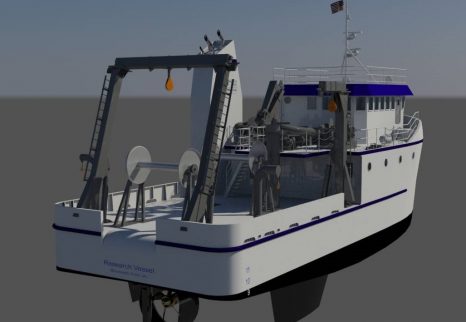
Virginia Institute of Marine Science Orders Research Vessel
Virginia Institute of Marine Science of Gloucester Point, Va. awarded a contract to Meridien Maritime Reparation of Matane, Quebec to construct a 93-foot research vessel. JMS Naval Architects of Mystic, Conn. designed the research vessel to replace VIMS’s current vessel, the R/V Bay Eagle. The primary mission of the Institute’s fleet is to provide inshore and offshore work platforms for the support of fisheries related oceanographic research projects. The new vessel will be capable of conducting fisheries assessments of greater capacity, in deeper waters and with a larger science complement than the Bay Eagle. In addition, the new vessel will greatly expand VIMS’s capability to perform general oceanographic research in the Chesapeake Bay and the mid-Atlantic near coastal waters. The state-of-the-art research vessel offers enormous capability in a small package that is also economic to build and operate. Read the rest here 13:28
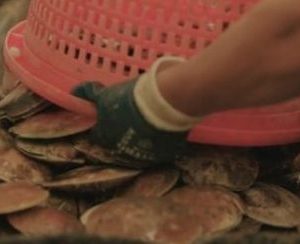
Sustaining Sea Scallops
SUSTAINING SEA SCALLOPS is a 35-minute documentary on the history and resurgence of the Atlantic sea scallop fishery, seen through the eyes of fishermen and researchers. In 1999, facing fisheries closures and bankruptcy, the scallop industry began funding a unique research program to minimize impacts on the marine environment. Fifteen years later, the Atlantic sea scallop is hailed as one of the most sustainable and lucrative fisheries in the world. From New Bedford, Massachusetts to Seaford, Virginia, fishermen and researchers tell a rare tale of renewal, offering cooperative research as a new model for sustaining healthy fisheries and fishing communities. A Connecticut fishermen describes tough times when trawl fishing went bust, and what changed once scallops started to rebound. Researchers at the Woods Hole Oceanographic Institution, the University of Massachusetts-Dartmouth, and Virginia Institute of Marine Science explain how gear innovations and better surveys ensure scallop future harvests while reducing needless harm to other species and habitat. At the heart of it all, a former NOAA Fisheries captain-turned-farmer works to increase fishermen’s access to these technologies through his non-profit research organization, the Coonamessett Farm Foundation. Watch the video here 09:52
Smithsonian expert urges caution, patience on blue crab recovery
 The results are in, 2016 is going to be a good year for blue crabs in the Chesapeake Bay. An iconic figure embedded in the culture and cuisine of the Chesapeake Bay area, the blue crab (Callinectes sapidus) sustains the most profitable fishery in Maryland and supports thousands of fishermen and seafood businesses in Maryland and Virginia. Based on the annual winter survey conducted by the Maryland Department of Natural Resources and the Virginia Institute of Marine Science, there are nearly 35 percent more blue crabs in the Chesapeake Bay this season than there were in 2015. That’s good news, especially on the heels of a 38 percent increase the previous year. But scientists say there is a cautionary tale in this rapid rise. (but, of course!) Read the rest here 16:29
The results are in, 2016 is going to be a good year for blue crabs in the Chesapeake Bay. An iconic figure embedded in the culture and cuisine of the Chesapeake Bay area, the blue crab (Callinectes sapidus) sustains the most profitable fishery in Maryland and supports thousands of fishermen and seafood businesses in Maryland and Virginia. Based on the annual winter survey conducted by the Maryland Department of Natural Resources and the Virginia Institute of Marine Science, there are nearly 35 percent more blue crabs in the Chesapeake Bay this season than there were in 2015. That’s good news, especially on the heels of a 38 percent increase the previous year. But scientists say there is a cautionary tale in this rapid rise. (but, of course!) Read the rest here 16:29
Removal of derelict fishing gear has major economic impact
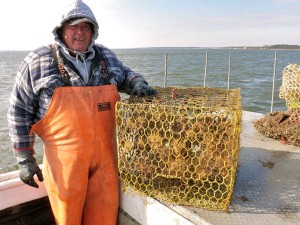 A new study by researchers at William & Mary’s Virginia Institute of Marine Science shows that removal of derelict fishing gear could generate millions of dollars in extra harvest value for commercial fisheries worldwide. The study focused on a 6-year, collaborative program to remove derelict crab pots from Chesapeake Bay, showing that the effort generated more than $20 million in harvest value for area watermen. Extending their methodology to estimate the economic benefits of removing derelict crab pots and lobster traps on a global basis,,, Read the article here 08:49
A new study by researchers at William & Mary’s Virginia Institute of Marine Science shows that removal of derelict fishing gear could generate millions of dollars in extra harvest value for commercial fisheries worldwide. The study focused on a 6-year, collaborative program to remove derelict crab pots from Chesapeake Bay, showing that the effort generated more than $20 million in harvest value for area watermen. Extending their methodology to estimate the economic benefits of removing derelict crab pots and lobster traps on a global basis,,, Read the article here 08:49
VIMs Study shows Blue crabs more tolerant of low oxygen than previously thought
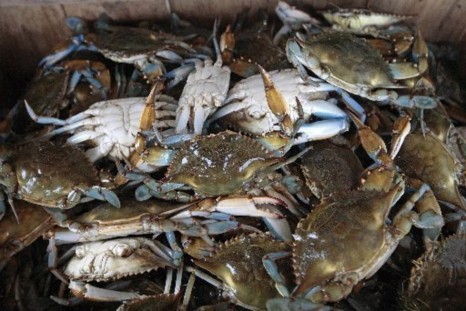 Results of a new study led by researchers at William & Mary’s Virginia Institute of Marine Science show that adult blue crabs are much more tolerant of low-oxygen, “hypoxic” conditions than previously thought. Lead author Rich Brill, a fishery biologist with NOAA’s National Marine Fisheries Service and adjunct faculty at VIMS, says “The notion that blue crabs are relatively intolerant of oxygen-poor waters was counterintuitive, because this species often occupies estuarine environments that can become hypoxic even in the absence of human activities.” Read the rest here 12:13
Results of a new study led by researchers at William & Mary’s Virginia Institute of Marine Science show that adult blue crabs are much more tolerant of low-oxygen, “hypoxic” conditions than previously thought. Lead author Rich Brill, a fishery biologist with NOAA’s National Marine Fisheries Service and adjunct faculty at VIMS, says “The notion that blue crabs are relatively intolerant of oxygen-poor waters was counterintuitive, because this species often occupies estuarine environments that can become hypoxic even in the absence of human activities.” Read the rest here 12:13
HabCamV4 sees large numbers of young scallops off Delaware Bay
 “We’re seeing many swimming scallops and other behaviors that are providing insights into how the animals live and interact in that environment,” Hart said. “Baby scallops are seen attached to adults, and other scallops are swimming above the bottom, perhaps to diffuse to areas that are less dense and provide more room to grow.” The NEFSC’s annual sea scallop survey is conducted in three segments or “legs,” each ranging from 11 to 14 days, between May and July, beginning with the Mid-Atlantic Bight, then Southern New England and ending on Georges Bank. Read the rest here 15:10
“We’re seeing many swimming scallops and other behaviors that are providing insights into how the animals live and interact in that environment,” Hart said. “Baby scallops are seen attached to adults, and other scallops are swimming above the bottom, perhaps to diffuse to areas that are less dense and provide more room to grow.” The NEFSC’s annual sea scallop survey is conducted in three segments or “legs,” each ranging from 11 to 14 days, between May and July, beginning with the Mid-Atlantic Bight, then Southern New England and ending on Georges Bank. Read the rest here 15:10
Fishermen get an education on all the most desired schools
 Last week, 25 commercial and for-hire recreational fishermen, along with industry participants, went to school to learn about fish populations — how they grow, what impacts them and how we can keep them at maximum sustainable yield levels. The session focused on science issues as they relate to fisheries. Read the rest here 07:54
Last week, 25 commercial and for-hire recreational fishermen, along with industry participants, went to school to learn about fish populations — how they grow, what impacts them and how we can keep them at maximum sustainable yield levels. The session focused on science issues as they relate to fisheries. Read the rest here 07:54
More Menhaden-Scientists have found new data that may prove there’s more of the fish than once thought.
 Atlantic Menhaden, the tiny fish that, two years ago, created big trouble between Chesapeake Bay environmentalists and commercial fishermen, is surfacing once more. In 2012, data indicated the fish were in trouble so regulators cut commercial harvests and fishermen lost jobs. But the data used was flawed. Read the rest here 23:08
Atlantic Menhaden, the tiny fish that, two years ago, created big trouble between Chesapeake Bay environmentalists and commercial fishermen, is surfacing once more. In 2012, data indicated the fish were in trouble so regulators cut commercial harvests and fishermen lost jobs. But the data used was flawed. Read the rest here 23:08
VIMS begins 75th anniversary celebration
 The Virginia Institute of Marine Science begins a yearlong celebration of its 75th anniversary this month, with the launch of a special multimedia website and the first of its monthly series of anniversary-themed public lectures for 2015. Read the rest here 10:46
The Virginia Institute of Marine Science begins a yearlong celebration of its 75th anniversary this month, with the launch of a special multimedia website and the first of its monthly series of anniversary-themed public lectures for 2015. Read the rest here 10:46
UNE researcher gets $1.7M grant to aid fishing industry – will research the mortality rate of winter skates
 A federal agency has awarded a University of New England researcher and his colleagues $1.7 million for a research project they hope will help increase revenues for the fishing industry. “If our proposed study is as successful as our previous otter trawl project, it could result in increased revenues to the commercial fishing industry,” Read more here 16:05
A federal agency has awarded a University of New England researcher and his colleagues $1.7 million for a research project they hope will help increase revenues for the fishing industry. “If our proposed study is as successful as our previous otter trawl project, it could result in increased revenues to the commercial fishing industry,” Read more here 16:05
McAuliffe signs storm-water legislation at VIMS
 GLOUCESTER Va— Gov. Terry McAuliffe proved he’s a hands-on governor Thursday when he capped a ceremonial signing of state legislation regulating storm water on the campus of Virginia Institute of Marine Science with a tour on a trawling boat that had him handling live fish and blue crab. Read more here 09:18
GLOUCESTER Va— Gov. Terry McAuliffe proved he’s a hands-on governor Thursday when he capped a ceremonial signing of state legislation regulating storm water on the campus of Virginia Institute of Marine Science with a tour on a trawling boat that had him handling live fish and blue crab. Read more here 09:18
VIMS scientists star in new children’s book
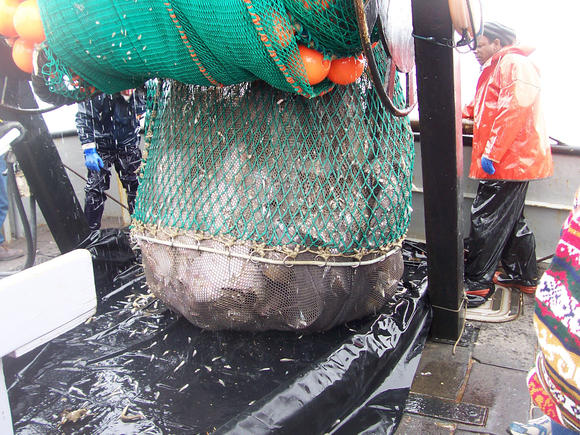 Taking head counts of fish isn’t glamorous work, but it’s made literary stars of sorts out of a team of researchers at the Virginia Institute of Marine Science. A new non-fiction children’s book called “Counting the Fish in the Sea” depicts the ongoing efforts of Jim Gartland, multispecies survey leader at VIMS, and his colleagues to gather wide samples of fish species in order to gauge the overall health of the ocean. The book is written for children ages 8 to 12. Read more here dailypress.com 22:04
Taking head counts of fish isn’t glamorous work, but it’s made literary stars of sorts out of a team of researchers at the Virginia Institute of Marine Science. A new non-fiction children’s book called “Counting the Fish in the Sea” depicts the ongoing efforts of Jim Gartland, multispecies survey leader at VIMS, and his colleagues to gather wide samples of fish species in order to gauge the overall health of the ocean. The book is written for children ages 8 to 12. Read more here dailypress.com 22:04
VIMS professor links sea star die-off to blue crab, lobster diseases – Rising sea temperature, contaminants to blame
As dramatic videos of the West Coast sea star die-off make the rounds on social media, a Virginia Institute of Marine Science professor has been quietly studying similar catastrophes closer to home. (Jeffrey) Shields sees parallels between the “Sea Star Wasting Syndrome,” as the mysterious attack has come to be known, and his own research into similar infections in crabs and lobsters. Read more here virginiagazette 16:21

































